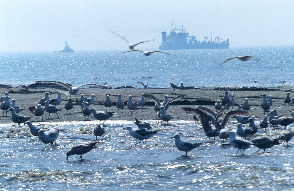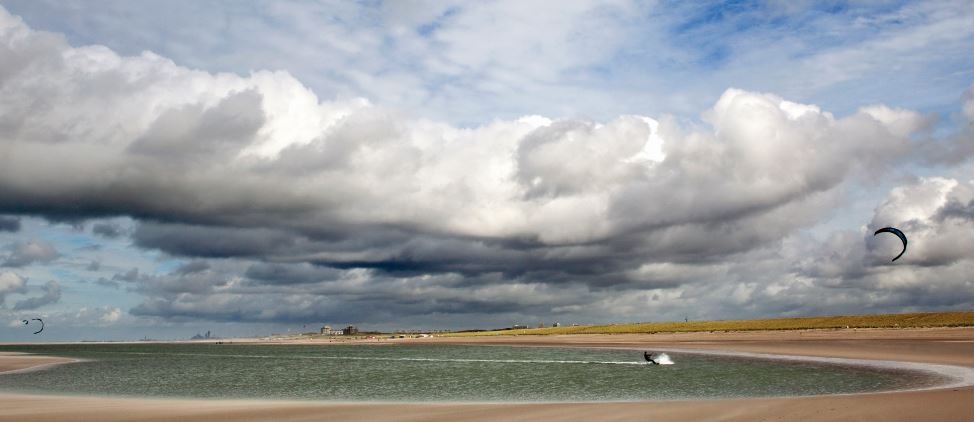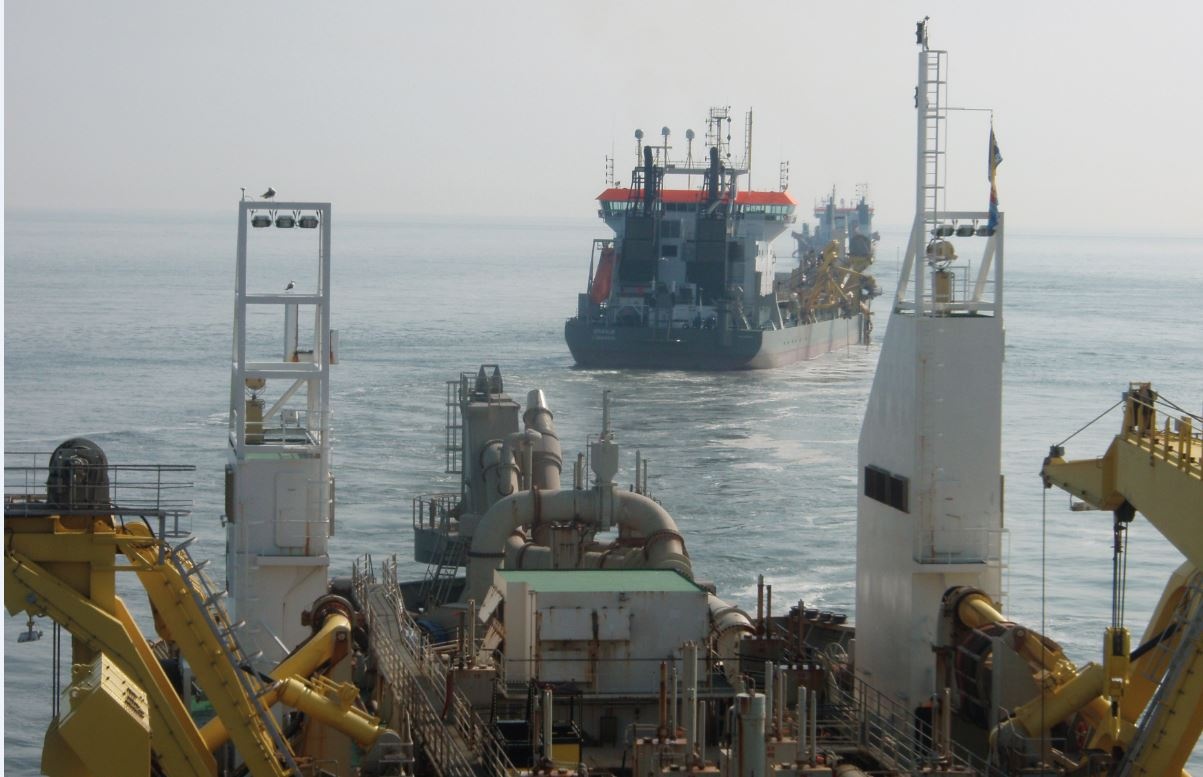70% of the world’s population will be living in delta regions by 2050. As the climate is changing, sea levels are rising and societal demands increase, water-related infrastructure development faces new challenges.
These challenges are also described in the UN Sustainable Development Goals, such as ‘Clean water and sanitation’ (6), ‘Sustainable cities and communities’ (11) and ‘Climate action’ (13). A paradigm shift from building in nature to building with nature is necessary to ensure a sustainable future.

People and economic activities keep on concentrating in large urban areas, mostly located in coastal, deltaic and riverine areas (named ‘deltaic areas’ hereafter) (Cohen et al., 1997). Land and water use in these urbanizing areas grows dramatically, as do flood risk and climate sensitivity. Moreover, society increasingly demands more safety, prosperity and sustainability (Vitousek et al., 1997; Ehrlich and Ehrlich, 1997).
This demand cannot be met without developing new infrastructure. Coasts need to be protected while sea-level rises. Rivers need to provide for safe conveyance of ever more extreme floods while remaining a suitable fairway for an intensifying transport. The capacity of harbours and access channels needs to be increased. The quality of water bodies and subsoil needs to be guaranteed. Natural resources need to be used sustainably. This puts increasing demands on the development of surface water infrastructures and calls for innovative solutions in project development, hydraulic engineering and water system management.
Developments in infrastructure projects

The past decades have shown that the realisation process of infrastructural works is characterised by the following developments:
- We want more (multifunctional designs, including environmental aspects);
- We know more (knowledge of natural systems has increased enormously); and
- We can do more (increased technological capabilities enable new approaches)
Whereas at the same time:
- We have to operate more carefully (legal restrictions have increased);
- We have more difficulty getting things done (complexity of decision making has increased); and
- We have to meet increasingly complex functional requirements (modern society has high demands).
These developments bring challenges as well as opportunities. Building with Nature aims to meet these challenges by taking advantage of the opportunities offered by nature. An integrated approach and stakeholder involvement from the early stages of project development onwards are essential features.
Ecosystem services
In recent literature, the links between nature and the economy are often described using the concept of ecosystem services, or flows of value to human societies as a result of the state and quantity of natural capital. The Millennium Ecosystem Assessment (2005), and more recently ‘The Economics of Ecosystems and Biodiversity’ (TEEB) studies, provide guidelines for the application of the concept of ecosystem services in planning and design.
The TEEB approach is to show how economic concepts and tools can help equip society with the means to incorporate the values of nature into decision making at all levels. TEEB shows why prosperity and poverty reduction depend on maintaining the flow of benefits from ecosystems. It also demonstrates why successful environmental protection needs to be grounded in sound economics, which includes explicit recognition, efficient allocation, and fair distribution of the costs and benefits of conservation and the sustainable use of natural resources. These points match with the BwN philosophy. >Nature valuation tools based on the concept of ecosystem services are included in the Building with Nature toolbox.
Paradigm shift
The essence of the Building with Nature-approach is that surface water infrastructure development works with nature rather than against it. This requires a change in thinking, a paradigm shift in all aspects of project development: from ‘building in‘, via ‘building of‘ to ‘building with nature’.
The relationship between surface water infrastructure development and the environment is shifting from minimizing negative environmental impacts, via neutrality by compensation, to optimizing on a positive balance. In other words: from doing not too bad, via doing no wrong, to doing good. This leads to the generic strategic objective for Building with Nature projects, in which two objectives are combined:
“To deliver engineering services while delivering and/or utilising ecosystem services.”
| Building With Nature approach: wider and greener scope |
| The ecosystem-based Building with Nature design approach boils down to: |
| 1. Understand system functioning 2. Identify the system’s envisaged functions and plan a project or activity accordingly 3. Determine how natural processes can be used and stimulated to achieve the project goals and others 4. Determine how governance processes can be used and stimulated to achieve the project goals 5. Monitor the environment during execution and – if necessary – adapt the monitoring program and/or the project execution 6, Monitor the environment after completion, to assess the project’s performance, adapt its management, and to learn for the future |
 |
| Traditional approach: sectoral, narrow scope |
| The usual approach to large hydraulic projects, once the general objective has been identified and the direction of solution has been chosen, basically follows the steps: |
| 1. Plan a project or activity 2. Describe the effects on the ecosystem 3. Optimize the design to minimize or mitigate detrimental effects 4. Compensate by building of nature 5. Execute the project in strict adherence to preset norms and regulations |
 |
The importance of a new paradigm was already noted by Mitsch (1996), in his publication on Ecological Engineering. He states that ” the design of sustainable ecosystems intends to integrate human society with its natural environment for the benefit of both”. He furthermore poses that: “The state of the environment, combined with a dwindling of nonrenewable natural resources available to solve environmental problems, suggests that the time has come for a new paradigm in engineering that deals with questions and solutions on the scale of ecosystems and landscapes. There are a great number of environmental and resource problems that need an ecosystem approach, not just a standard technological solution. Ecological Engineering will play a significant role in a sustainable society. “
Early infrastructural works used to be realized without paying much attention to the potential environmental impact: building instead of nature . In the 1970’s interest for the environment increased and legislation was developed to make sure that environmental impacts were taken into consideration. As a consequence attention was focused on minimizing the environmental impacts caused by infrastructural works: building in nature . Early examples of such projects are the Afsluitdijk (completed in 1932) and the construction of the Flevo polders (completed in 1968). The Delta works, with the construction of the Eastern Scheldt barrier (completed 1986) as the supposed pinnacle of impact minimization, mark the end of this period, at least in the Netherlands (Van Koningsveld et al., 2008).
Since the 1990’s, European environmental legislation adopts the principle: prevention, mitigation and compensation of residual effects. The compensation of any residual nature loss yields a nature neutral approach, but also building of nature . Legislation emphasizes preservation of existing nature and puts much emphasis on the precautionary principle. As a consequence, projects are still dominated by impact minimization, extended with mitigation and compensation measures. An example from this phase is the design of the Maasvlakte 2 project, which has been designed to minimize its environmental impact, while residual effects are compensated by additional nature development.
The next step in the development of hydraulic engineering is to create opportunities for development of new nature, up and above what is required for mitigation or compensation: building with nature . The credo is no longer doing less bad, it now becomes doing good. Early examples are a.o. the Grensmaas project (in Dutch) (2010 ongoing), where flood protection and gravel mining are combined with river restoration and nature development, and the strengthening of the Delfland coast (completed 2009), where nature development was used as a starting point for sustainable coastal strengthening.
Where opportunities for nature development are created one can speak of building for nature (providing ecosystem services). Examples of projects where this has been applied are the Eastern Scheldt revetment project and the ‘Levende waterbouw’ cases: Rich Revetment and Harbouring Opportunities.
In cases where natural processes have actually been used to assist in creating (part of) a development one can speak of building by nature (utilizing ecosystem services). Examples of projects in this category are the Sand Engine Delfland (started 2011), where natural processes distribute sand from a large man-made deposit over shore, beach and dunes, and the Gorai Re-excavation Project, where dredging triggered natural river deepening, thus providing the Sunderband nature reserve with fresh water and creating new economic activity around the river.
EcoShape recognises that the societal trend towards sustainable development triggers other organizations to develop similar philosophies. Pioneering work has been done by Dr. Ronald Waterman (Waterman, 2008), and excellent other examples are the Working with Nature initiative developed by PIANC and the Engineering with Nature initiative developed by USACE.
Working towards Building with Nature
Shifting the development paradigm for surface water infrastructure towards Building with Nature Design requires not only a redefinition of what to do and what to aim at, but also of how to do it: a change in thinking, acting and interacting.
Think differently
Man-made projects are an inherent part of the environment. They provide a unique opportunity to induce positive change!
The Building with Nature Design approach requires all parties involved to think differently and take a new perspective on the project at hand. Evaluation of a number of successful Building with Nature cases has revealed that this new perspective can be characterized extending the problem solving approach of traditional engineering with an ecology-inspired and governance-sensitive opportunity seizing attitude.
From a project development perspective this means starting with the system in mind, not with the intervention.
‘The system’ in this case includes the physical (biotic and a-biotic) as well as the socio-economic and governance sub-systems. Equipped with system knowledge the Building with Nature project developer and stakeholders interact to explore opportunities for win-win solutions. This requires an open mind, daring use of creativity and a trans-disciplinary approach. Throughout the development process the Building with Nature designer should continuously rephrase the most fundamental project objectives. For instance, the common design objective “Design a safe and cost-effective hydraulic infrastructure with minimal impact on the environment” can be rephrased to “Design a safe and cost effective hydraulic infrastructure and optimize the mutual delivery of services to and by the environment”.
Practical implementation requires policy makers, stakeholders, biologists, ecologists, economists and engineers to jointly approach the project development challenge, looking for win-win solutions. The best Building with Nature designs deliver the primary functions for which the project was initiated in the first place, but provide optimal added value from an ecological and economical perspective, as well. It should be noted that opportunities to add such value are present in any stage of a project. Obviously, the potential impact of Building with Nature Design is greater when the concept is embraced earlier in the process.
Act differently
Natural processes can be used and stimulated to achieve an optimal and sustainable fit of a man-made project in its environment
Most hydraulic infrastructure is regarded as a static element with a predetermined lifespan, designed to withstand a number of predetermined environmental design conditions. The design process is aimed at finding the most cost-effective solution that provides the required functionality. The envisaged win-win solutions that were addressed in the previous section require more than that: they commonly involve catering for more than one function and extending traditional and proven design approaches with the utilization of dynamic environmental processes.
Building with Nature Design considers the planned intervention as part of a dynamic environment. This means that the physical processes at work and the associated timescales must become part of the ultimate design. Sand Engine Delfland is a practical example of a project that aims to use natural processes to achieve a predetermined management objective. Rather than applying regular sediment nourishments at various locations along the coast, the Sand Engine project aims to apply one very large nourishment, thus allowing natural processes to gradually redistribute the sediment over the coastal system. As a benefit over the traditional practice of sediment nourishment, this innovative approach foresees a more natural coastal profile, less net disturbance of the coastal ecosystem, the development of valuable habitat, an increased freshwater reserve in the dunes and potential recreational value.
By definition, the explicit inclusion of natural processes in surface water system development involves the introduction of uncertainty and potentially even risk. Adequately dealing with this uncertainty, by generating more knowledge, by including proper contingency measures or by introducing flexibility allowing for adaptive management, is crucial to the feasibility of a solution. Taking a life cycle approach helps to bring forward potentially more efficient solutions.
Interact differently
Realisation of Building with Nature projects cannot be achieved without interdisciplinary collaboration and early and active stakeholder involvement
In every project development phase adjustments can be made. The earlier the Building with Nature Design Principles are incorporated in a project, the more can be achieved. Nonetheless, it is never too late to start. Experience has shown that ecological optimizations can still be made during construction or even maintenance phases. The Rich Revetment concept, which has been introduced during large scale dike maintenance works, serves as an example. Yet, building with nature cannot be achieved without early and active stakeholder involvement.
Relevant stakeholders should be involved in the design process to assign economical value to ecological opportunities, for example. Another reason for involvement can be their experience in the local physical, ecological, social and/or administrative environment. Involving stakeholders in the process of developing Building with Nature Designs offers them the opportunity to integrate their knowledge and ideas in the program, thus making them co-owners of the problem as well as the solution. Building with Nature Design, in other words, calls for a pro-active collaboration between all parties and disciplines involved. Only with the right team, Building with Nature Design opportunities can be seized. The Building with Nature designer should operate across sectors and disciplines.
The changes in attitude and approach advocated above ask for a type of ‘governance’ that allows for a certain degree of flexibility and covers the project development from scratch. Present governance settings may be less suitable for this concept, so changes may be necessary, even if they are time-consuming. Also criteria and contract types to involve market parties should fit the dynamic, adaptive approach. Traditional contracting may be less suited. Modern types of contracting, based on some form of ‘partnership’, provide more flexibility and more mutual commitment to really achieve BwN-targets.
References
Literature
- Cohen, J. E.; Small, C.; Mellinger, A.; Gallup, J. & Sachs, J. Estimates of Coastal Populations Science, 1997, 278, pp 1209-1213
- Ehrlich, P.R. and A.H. Ehrlich, 1997. The population explosion: why we should care and what we should do about it. Environmental Law, Winter, 1997.
- Hinrichsen, D., 1999. The Coastal Population Explosion. pp 27-29. In: Cicin-Sain, B.; Knecht, R. W. & Foster, N. (Eds.), 1999. Trends and Future Challenges for U.S. National Ocean and Coastal Policy. Proceedings of a workshop January 22, 1999, Washington, D.C., pp 142.
- Mitsch, W.J., 1996, “Ecological Engineering: a new paradigm for engineers and ecologists”, In: P.C. Schulze (Editor), Engineering Within Ecological Constraints. National Academy Press, Washington, D.C., pp. 114-132.
- PIANC; Working with Nature position paper
- TEEB, 2010. The Economics of Ecosystems and Biodiversity: Mainstreaming the Economics of Nature: A synthesis of the approach, conclusions and recommendations of TEEB
- Van Koningsveld, M., J.P.M. Mulder, M.J.F. Stive, L. van der Valk and A.W. van der Weck, 2008. Living with Sea-Level Rise and Climate Change: A Case Study of the Netherlands. Journal of Coastal Research 24(2): pp. 367-379.
- Vitousek, P.M., H.A. Mooney, J. Lubchenco, and J.M. Melillo, 1997. Human Domination of Earth’s Ecosystems. Science 277(5325) pp 494-499
- Waterman, R.E., 2008. Integrated Coastal Policy via Building with Nature®. Opmeer Drukkerij, The Hague, 450 pp, ISBN/EAN 978-90-805222-3-7
Internet
- http://www.maweb.org – Millennium Ecosystem Assessment (2005)
